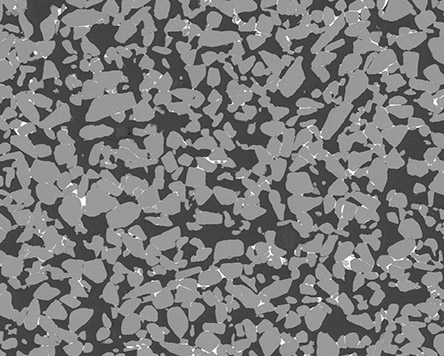Quick introduction: Foundry

For a number of applications in melt metallurgy, diaphragms are required to enable pressure equalization of hollow chambers in components without them being filled by the molten metal. In hot dip coating, for example, a metal strip is passed through a molten metal bath, where hollow rollers are currently used as deflection and guide rollers. In case of contact with extreme heat and the resulting overpressure, however, the current design shows a lack of stability. A problem is the possible deformation of the rollers when they are lowered into the metal bath, as the gas expands inside the hollow roller. There is also a risk of an extreme increase in pressure, including bursting, if the hollow roller contains small amounts of moisture.
Fraunhofer IKTS has developed novel gas-permeable ceramics for use in melting metallurgy and metal finishing as part of an industrial cooperation that solves the problem of the instability of hollow rollers. A small disc made of these ceramics is inserted into the bearing of the hollow rolls by means of a specially developed holding device. It releases the expanding gas from the roll into the melt. The ceramic disc is hardly wetted by the molten metal and the pores are so fine that the gas can pass through, but penetration of the molten metal is not possible even at high melting pressure. With the help of these porous ceramics, gases can be quickly dissipated and overpressures on functionally decisive components prevented.
In addition, the porous ceramics can also be used as an active safety device, as it acts as a bursting disc for the directional dissipation of excess pressure in the event of extreme pressure increase, thus reliably preventing deformation and even bursting of the hollow roller.
Tests under industrial conditions have already shown that the ceramics can withstand a melt pressure of aluminium melt at 680 °C or zinc melt at 480 °C with a melt bath height of 2.5 m. The impermeability of the ceramics to the melt reliably prevents the penetration of the molten metal into the component and ensures targeted venting and pressure reduction.
The ceramics are also heat-resistant to approx. 1200 °C in air and corrosion-resistant to light metal melts. The application principle can thus also be extended to other alloys.